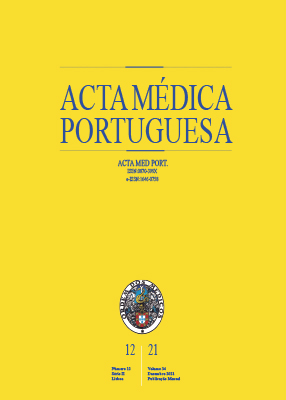Hysteroscopic Findings Related with the Assessment and Treatment of Uterine Florid Cystic Endosalpingiosis: A Case Report and Review of All the Published Cases
DOI:
https://doi.org/10.20344/amp.14292Keywords:
Fallopian Tube Diseases/diagnosis, Fallopian Tube Diseases/therapy, Gynecologic Surgical ProceduresAbstract
Introduction: Endosalpingiosis is a rare benign condition characterized by the presence of tubal epithelium outside the Fallopian tube. The clinical presentation of endosalpingiosis is nonspecific, and the diagnosis is typically incidental in women undergoing surgery for pelvic pain, infertility, urinary symptoms, or a pelvic mass. It can only be confirmed with histopathological examination.
Case Report: We report the first case of uterine florid cystic endosalpingiosis, with unusual hysteroscopic findings. We reviewed all the published cases of uterine florid cystic endosalpingiosis and their clinical presentation including hysteroscopic characteristics. It is a rare benign condition, with only 32 cases described in the literature. This is the first hysteroscopic description of this condition to be made.
Discussion: The patient first underwent a hysteroscopy and a leiomyoma resection when she was 51 years old. At 55, she went through another hysteroscopy, and a polypoid lesion was excised. A third hysteroscopy, one year later, revealed a new polypoid lesion in a similar location. After the initial incisions, this polypoid lesion disappeared. By decreasing the intrauterine pressure, it became visible again, corresponding histologically to an endometrial polyp with tubal metaplasia. At last, she underwent a laparoscopic hysterectomy with a final histopathological diagnosis of uterine florid cystic endosalpingiosis.
Conclusion: Florid cystic endosalpingiosis is a rare condition that may be associated with several bizarre hysteroscopic findings.
Downloads
Downloads
Published
How to Cite
Issue
Section
License
Copyright (c) 2020 Acta Médica Portuguesa

This work is licensed under a Creative Commons Attribution-NonCommercial 4.0 International License.
All the articles published in the AMP are open access and comply with the requirements of funding agencies or academic institutions. The AMP is governed by the terms of the Creative Commons ‘Attribution – Non-Commercial Use - (CC-BY-NC)’ license, regarding the use by third parties.
It is the author’s responsibility to obtain approval for the reproduction of figures, tables, etc. from other publications.
Upon acceptance of an article for publication, the authors will be asked to complete the ICMJE “Copyright Liability and Copyright Sharing Statement “(http://www.actamedicaportuguesa.com/info/AMP-NormasPublicacao.pdf) and the “Declaration of Potential Conflicts of Interest” (http:// www.icmje.org/conflicts-of-interest). An e-mail will be sent to the corresponding author to acknowledge receipt of the manuscript.
After publication, the authors are authorised to make their articles available in repositories of their institutions of origin, as long as they always mention where they were published and according to the Creative Commons license.









